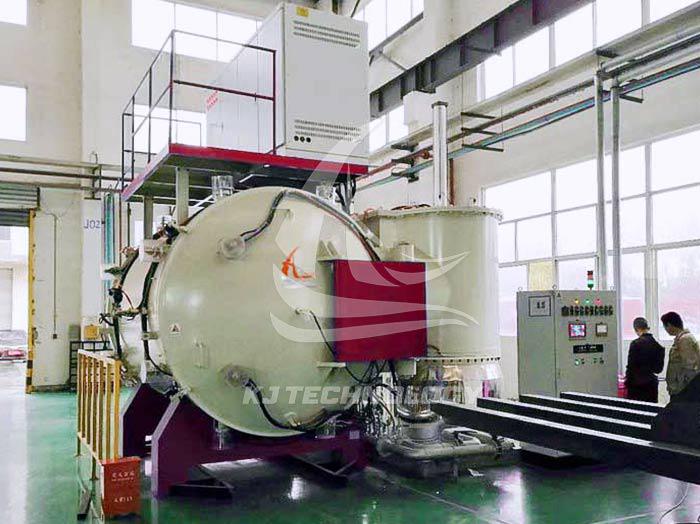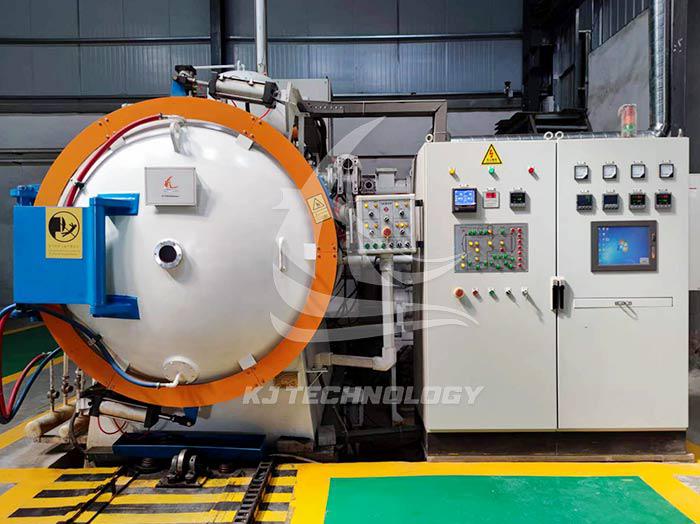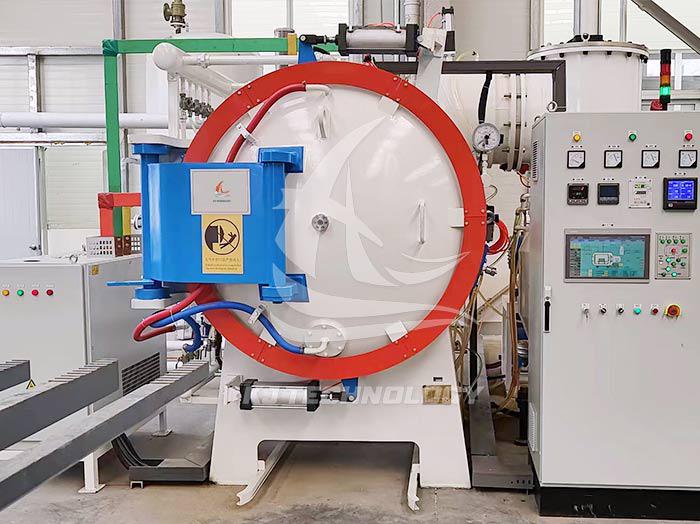Application of Vacuum Brazing Furnace in Ceramic Industry
 03-21-2025 Author: KJ technology
03-21-2025 Author: KJ technology
The application of vacuum brazing furnaces in the ceramic industry is mainly reflected in the connection between ceramics and metal materials, which has brought many innovation and development opportunities to the ceramic industry.
1. Technical background and advantages
Ceramic materials have characteristics such as high melting point, high insulation performance, and poor thermal stability, which pose great challenges to traditional welding methods when connecting ceramics and metal materials. Vacuum brazing technology can effectively solve these problems. Vacuum brazing is the process of using brazing material to melt and fill the gap between ceramics and metals in a vacuum environment, achieving a strong connection between the two. This technology has the following advantages:
High quality welded joints: The vacuum environment avoids oxidation, nitriding and other reactions during the welding process, reduces welding defects, and improves the quality of welded joints.
Wide material applicability: Vacuum brazing is suitable for a variety of ceramic and metal materials, including ceramics such as alumina, silicon nitride, and silicon carbide, as well as metals such as stainless steel, aluminum alloys, and titanium alloys.
Accurate process control: The vacuum brazing furnace can precisely control parameters such as temperature, time, and vacuum degree during the welding process, ensuring the stability and reliability of the welding process.
2. Application scenarios
Electronic packaging: In the field of electronic packaging, ceramic copper-clad laminate (DBC) is an important material used to make heat dissipation substrates for high-power electronic devices. Vacuum brazing technology can achieve a strong connection between ceramic substrates and copper layers, improving the heat dissipation performance and reliability of electronic devices.
Aerospace: In the field of aerospace, ceramic materials are widely used due to their excellent high temperature resistance and corrosion resistance. Vacuum brazing technology can achieve reliable connection between ceramics and metal materials, and is used to manufacture key components such as engine parts and heat exchangers.
Medical devices: In the field of medical devices, ceramic materials are used to make artificial joints, dental implants, etc. due to their good biocompatibility and corrosion resistance. Vacuum brazing technology can achieve precise connection between ceramics and metal materials, improving the performance and reliability of medical devices.
Cutting tool manufacturing: In the field of cutting tool manufacturing, ceramic cutting tools are highly favored due to their high hardness and wear resistance. Vacuum brazing technology can achieve a firm connection between ceramic blades and metal substrates, improving the service life and cutting performance of cutting tools.
3. Specific cases
Vacuum brazing of alumina ceramics and stainless steel: Researchers prepared metalized ceramic surfaces and stainless steel brazing surfaces, using AgCu28Ni1.5 alloy powder as the brazing material, and achieved a strong connection between alumina ceramics and stainless steel at a brazing temperature of 830 ℃ and a holding time of 15 minutes. The obtained brazed joint can meet the requirements of high temperature testing and has good sealing performance.
Vacuum brazing of surface activated alumina ceramics and aluminum alloys: Researchers at Harbin Institute of Technology used Ag Cu Ti powder to perform active metallization treatment on the surface of alumina ceramics, and then brazed them with 5005 aluminum alloy in a vacuum environment. By precisely controlling the welding parameters, a brazed joint with a shear force of up to 15 MPa was obtained.
4. Development Trends
With the continuous expansion of ceramic materials in various fields, the application prospects of vacuum brazing technology in the ceramic industry will be even broader. In the future, with the continuous advancement of technology and the continuous improvement of processes, vacuum brazing technology will play an important role in more fields, injecting new vitality into the development of the ceramic industry.
In summary, the application of vacuum brazing furnaces in the ceramic industry is of great significance, providing new solutions for the connection between ceramics and metal materials, and promoting innovation and development in the ceramic industry.








